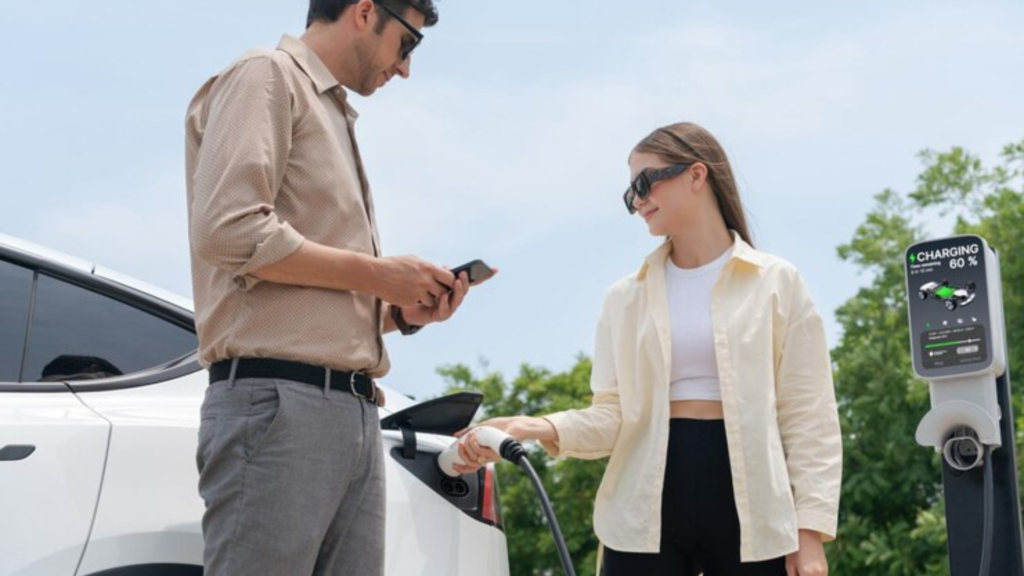- Get link
- X
- Other Apps
Compared to vehicles of similar classes with internal combustion engines, electric vehicles are typically more expensive. Compact electric cars will typically cost two to three million rubles in the Russian market in 2024, while a compact car with an internal combustion engine will cost roughly one and a half to two million rubles. In addition to the fact that the cost of electric vehicles is decreasing annually, this disparity can be at least offset by providing subsidies for the purchase of electric vehicles.
Electricity is far less expensive than gasoline. An average 100-kilometer trip in an electric vehicle using a home outlet costs 60–100 rubles, while a gasoline-powered vehicle will cost 385–600 rubles. With an annual mileage of 20,000 kilometers, charging an electric car will cost roughly 20,000 rubles, while fueling a gasoline-powered car will cost roughly 120,000 rubles. Accordingly, depending on how and where you drive, an electric car can help you save about 100,000 rubles on fuel each year.
It is profitable to have an electric car in Russian conditions

Additionally, electric cars are constructed much more simply and don't require many costly maintenance procedures, such as changing the transmission, oil, or filters. Compared to a vehicle with an internal combustion engine, which has maintenance costs of between 40 000 and 80 000 rubles annually, an electric vehicle typically costs between 15 000 and 30 000 rubles annually. An electric car can save its owner between 25,000 and 50,000 rubles a year on maintenance. Electric vehicles may need to have their batteries replaced in a few years, which would cost between thirty and forty percent of the car's purchase price.
Nevertheless, modern lithium-ion batteries are made to last for eight to fifteen years. Although major repairs, such as replacing the engine or transmission, may also be required for internal combustion engine vehicles, they are typically less costly than changing the battery in an electric vehicle. Because of Russia's underdeveloped infrastructure, specialized services, and high cost of replacement parts, electric vehicle insurance is somewhat more expensive there. An electric car's insurance will typically cost between 40,000 and 70,000 rubles annually, while an internal combustion engine vehicle's insurance will cost between 30,000 and 60,000 rubles annually.
Pros and cons of an electric car

Although the difference is still apparent, it is gradually narrowing as the number of electric vehicles on the road rises. When compared to cars with internal combustion engines, electric vehicles are gradually retaining their residual value when they are sold, especially in areas with a well-established network of charging stations. Because of concerns about the "aging effect" of batteries, EVs may have a relatively low residual value in the Russian market. However, as EVs become more popular and their performance improves, reselling them will become more profitable.
An electric vehicle's five-year total cost of ownership includes the higher initial purchase price as well as lower fuel and maintenance expenses. Finally, despite having a higher initial cost, an electric car may end up being a more cost-effective purchase over time due to the savings on maintenance and charging. When used in cities and for short, frequent trips, an electric car will be more economical. Nonetheless, an internal combustion engine car is also a good choice for long-distance driving, especially in places with a limited network of charging stations.
Benefits for electric vehicle owners

Operating conditions and individual preferences will determine the choice: if one is ready for new technologies and long-term comfort, an electric vehicle is a good option; otherwise, an internal combustion engine vehicle will provide the well-known flexibility and versatility. We'll compare the fuel consumption of an electric car and a regular gas car to see the benefits. Between 7 and 15 liters of gasoline are used every 100 kilometers by gasoline-powered passenger cars. Let's say a liter costs 50 rubles.
Depending on the model and make, the owner of a gasoline-powered vehicle will spend between 350 and 750 rubles every 100 kilometers. An electric vehicle's fuel is electricity. To get a sense of how far an electric car can travel on the same amount of money, let's try to calculate the cost of electricity over the same distances. The average yearly consumption of passenger electric vehicles is 15–20 kWh per 100 kilometers. Furthermore, the average cost of kWh in typical apartment buildings is 3.71 rubles. To travel 100 kilometers, an electric vehicle's driver will need to use 50–100 rubles.
Conclusion

Here, it is evident that owning an electric vehicle is more cost-effective in Russia than owning a car with a conventional internal combustion engine. It's not that simple, though. The peculiarities of electric vehicles' operation are what define them. Fuel consumption increases during the winter because the engine and cabin must be heated. Similar circumstances apply to electric cars: you have to warm the battery and the interior on chilly days, which increases power consumption by about 25% and by as much as 50% in extremely cold temperatures.
Additionally, an electric car's range is still rather limited, so its owner will constantly need to find places to recharge. Staying in traffic with a car that has a regular internal combustion engine is not profitable; a lot of gasoline is wasted needlessly. However, no automobile can benefit from such a mode of use as an electric vehicle. No wasting of strength, no pulling. Since an electric vehicle lacks a powerful engine that could be useful when passing cars, it might seem that they have no place on the highway.
- Get link
- X
- Other Apps
Comments
Post a Comment